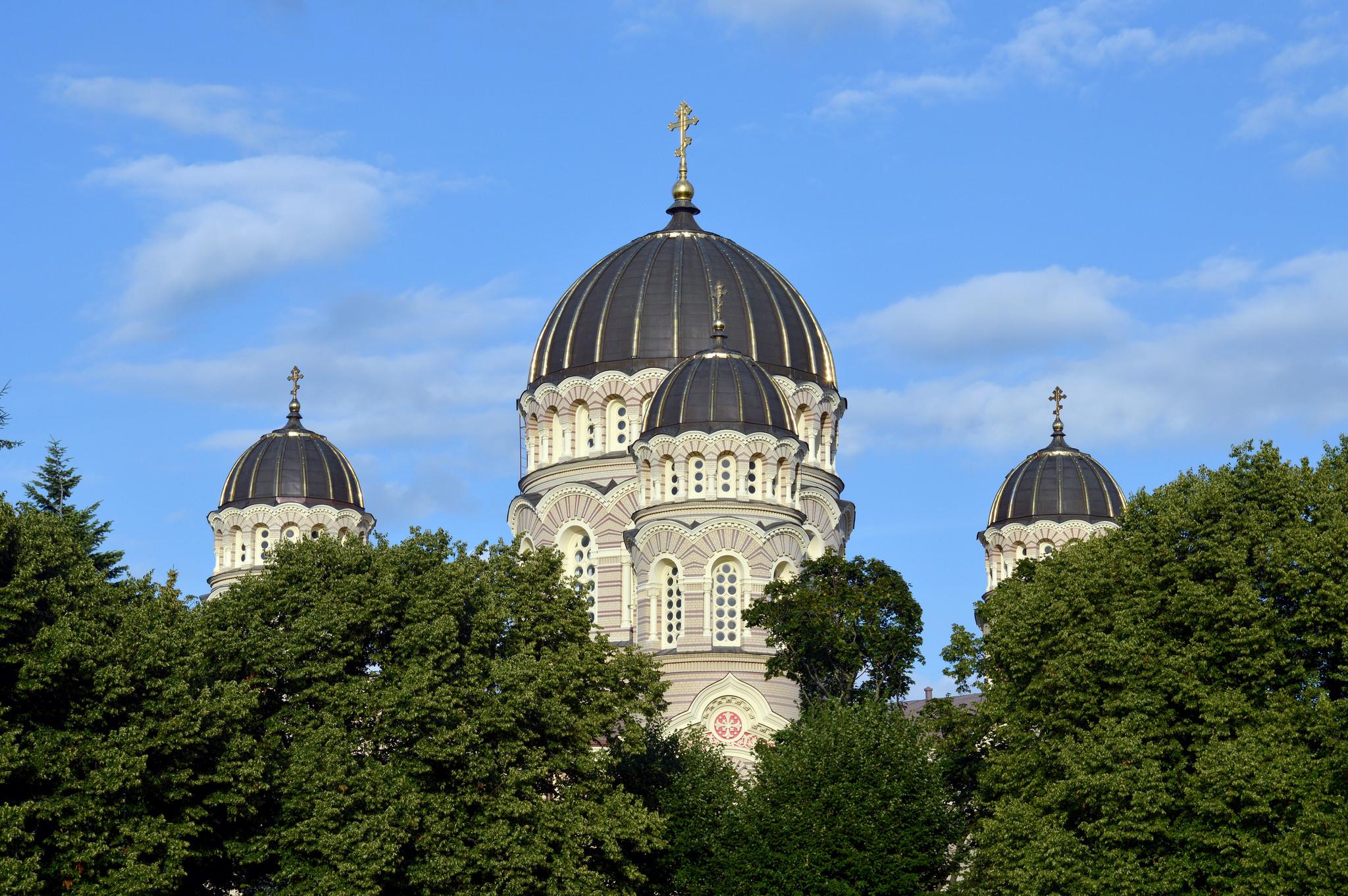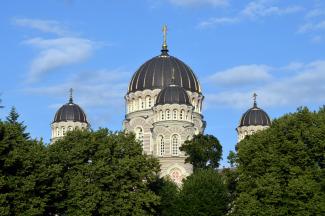The Riga Nativity of Christ Cathedral is the largest Orthodox church in Riga, which has withstood the Soviet-era as a planetarium and restaurant, but once again has become a sacral building, where Orthodox church services take place on a regular basis.
You can view this majestic building at Esplanade in central Riga! The Riga Nativity of Christ Cathedral is an architectural and stability symbol, which can be visited by anyone in need of solace and sanctuary.
Construction of cathedral
The cathedral’s founding stone was laid on July 3, 1876 by Riga Bishop Serafim (Protopov). The initial design did not feature a separate belfry but as the Russian Czar Alexander II presented a surprise gift (12 bells) the design was improved with one more dome for bells. The official opening took place on October 28, 1884.
The magnificent Riga Nativity of Christ Cathedral
The pre-World War I period saw about one-and-a-half thousand worshipers visiting the cathedral. The neo-Byzantine style building was the most expensive edifice of that time in Riga, its interior was uniquely rich and of high artistic value. The cathedral was renowned for its outstanding collection of ancient and valuable icons, three iconostasis painted by the brightest pedagogues of St Petersburg Academy of Art and the famous Russian painter Vasily Vereshchagin, the clergymen outfits made by the best St Petersburg seamstresses, and Byzantine-style frescoes with Orthodox Christian ornamentation.
House of Knowledge
Although the cathedral had survived both world wars, in the early 1960s, Soviet authorities closed the cathedral, sawed down the crucifixes, and re-melted the bells, and converted it into a planetarium, called the Republic House of Knowledge.
Cathedral’s rebirth
The restoration of the cathedral began in the late 1990s, and the iconostasis was consecrated by Archbishop Alexander on May 6, 2000. The renovation is still ongoing, financed by public donations through the project 'Svet'.


